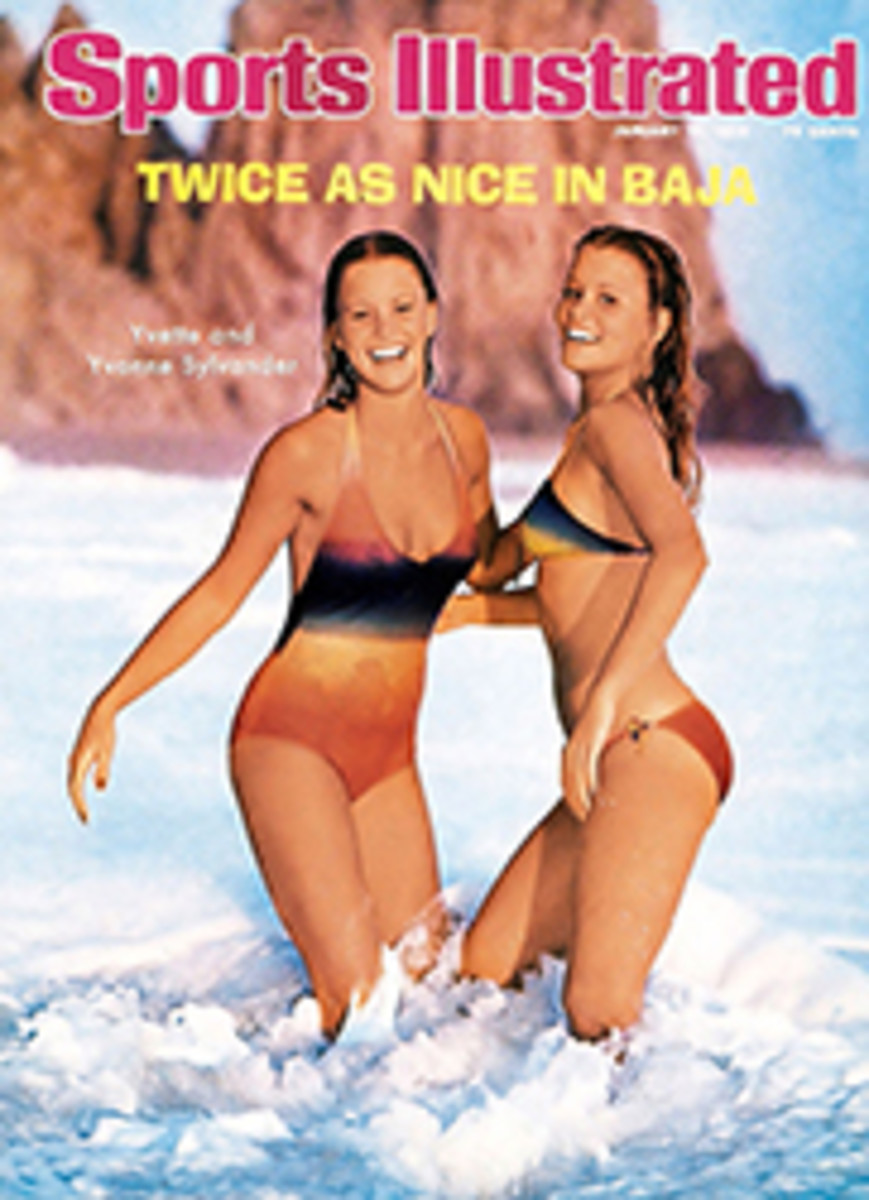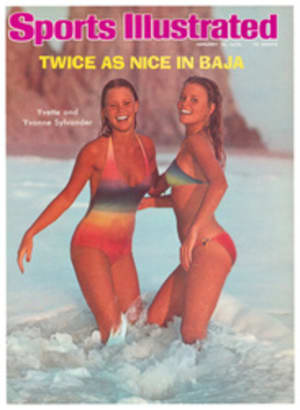
WHEN YOU'RE NO. 7 YOU TRY HARDER
In the closed-shop sport of figure skating, a defending champion is rarely deposed. Most often champions reign through an Olympics and a world meet or two, then defect to an ice show, sequins and all. But what the game misses in suspense it makes up in intrigue. The fans and experts applaud the inevitable, then get down to the far grittier business of following the infighting among the contenders struggling to become next in line. All of which pretty much made up the script in Colorado Springs last week at the U.S. national championships and Olympic Trials.
The faithful flocked to the Broadmoor Hotel to salute Dorothy Hamill, 19, twice the U.S. champion and the world silver medalist, a queen who is so locked into the role that chances are she could have sent in her performance by mail. Not that Hamill isn't deserving; she is as much a victim of the system as anyone. Her jumps were high, her landings light and she crackled with championship poise. She had smoked them all off earlier in the compulsory school figures, and her crown was secure.
"Hamill could lose," insisted one admirer. "Sure," answered a cynic. "If she falls down five times or disappears in a blinding flash." And with the champion piling up points, attention turned to the icy scramble shaping up for second and third spots. Leading contenders were Wendy Burge, 18, who had placed second in last year's nationals, and Kath Malmberg, 19, who had finished third. Experts also gave an outside chance to Barbie Smith, 16, of Westminster, Calif. and Priscilla (Tinker Bell) Hill, 14, of Lexington, Mass. Both girls are capable of whipping off into triple jumps, a flashy and perilous move that calls for 3½ revolutions in midair. Not everybody can pull it off, including the champion, who is reluctant to get caught that far off the ice. Still, the triple, once a move limited to men skaters, is becoming standard with many of the women. And last of all, nobody in all Colorado paid any attention to a 5'3" 85-pounder named Linda Fratianne, of Los Angeles, the Pacific Coast freestyle champion, who had placed an out-of-sight seventh in last year's nationals. As they say in commercials, back to Linda in a moment.
To confuse the issues further, two of the best women figure skaters in the world, both Americans, were not even there to take on the U.S. champion. Most conspicuously absent was world champion Dianne deLeeuw, of Paramount, Calif., a dynamic athlete who competes for the Netherlands despite the fact that she is U.S. born and was sharpened to top class in this country. DeLeeuw carries dual citizenship, a legal sleight-of-hand thing they do with passports, which has enabled her to avoid standing in the American competition chorus-line to wait her turn with everybody else. Another absentee was Susanna Driano, 18, the Italian champion, who skates under the same arrangement. Driano, also winner of this year's Canadian International competition, trains in Denver with Ham-ill's coach, Carlo Fassi, the man who brought us Peggy Fleming, but she too skips all U.S. events. DeLeeuw preps for the Olympics under the care of Coach Doug Chapman in California, then jets off to Europe for competition. So much for the system: the U.S. moves its skaters up in lockstep; in countries like the Netherlands and Italy it is a lot easier to make the Olympic team right away.
Marching through feathery snowflakes that might have been ordered for the occasion, the Air Force Academy band trooped to the arena, followed by children dressed in tri-corner hats, white breeches and gold-braided red jackets, like so many miniature George Washing-tons setting out for the Delaware.
Inside the hall Hamill breezed through the seven prescribed moves to take first in the short program, her two minutes of ice time fiery, clean and admirable, as always. Malmberg, solid but unspectacular, placed second, trailed by the businesslike Burge. Barbie Smith finished the program, but withdrew when an earlier leg injury flared up. Priscilla Hill, despite a breathtaking performance, drew modest marks—far too modest by crowd reaction.
"What they don't understand," said one old skate who approves of the system, "is that Priscilla is being groomed for the next four years." In Olympic year 1980 Hill will be 18 and presumably ripe for stardom, unless she can rummage into her ancestry and produce a foreign link to dual citizenship. Now back to Linda Fratianne.
Sprinting across the rink in an explosion of 15-year-old energy, Linda put on a performance that made some of the other offerings look like training films for beginners. Even the judges raised their predisposed heads. Still, Fratianne had placed only fourth in school figures, 30% of her total score, and it did not seem likely that she could overtake Burge or Malmberg. "No way," said the old skate. "We do not send unknown quantities to the Olympics." When her short program was over, with the finals to follow, Fratianne was in the fourth spot.
The intervening men's program only served to build suspense. Three-time champion Gordon McKellen Jr. had vacated the role and grabbing for it were David Santee, 18, who had unexpectedly placed first in compulsories; world freestyle champion (not to be confused with world champion) Terry Kubicka, 19; and an old nationals regular, Charles Tickner, 22. When the ice chips settled, Kubicka was the new national champion and Innsbruck-bound, backed up by Santee. Tickner was out of it; third place went to Scott Cramer. The senior women took to the ice again.
Fans packing the arena did not have to wait long for their darling; Hamill was first in the draw. Gliding prettily into action, she started out strongly with an open axel, followed by a perfect double axel. But she leaned badly on her next double axel. The bobble must have upset her, for that was, in effect, the end of her four-minute program.
Fassi, perhaps forgetting that ABC-TV had attached a live microphone to his body, paced unhappily at the side of the rink, spluttering, "Do de loop?," and, "Were is de flip?" His English, usually smooth, worsened in direct proportion to his mounting frustration. He gradually became incomprehensible, while Hamill, finishing her program without loop or flip, skated off. A competitor is not penalized for moves not attempted, and the judges overlooked the unexciting performance, awarding Hamill 5.8s and 5.9s out of possible perfect 6.0s. A scattered chorus of boos challenged this generosity, but the crowd was soon to get its money's worth.
Out darted Fratianne, coursing the rink like a dervish, leaping into a triple salchow and driving that move home with a triple toe loop followed by a double axel and two double toe loops. Her exuberance was contagious, her skill undeniable. Before she had finished, the crowd was on its feet, shouting for justice. The judges, perhaps sensing mutiny, rewarded Fratianne an average of 5.8 for technical merit and 5.7 for artistic impression. Would it be sufficient—not for the championship, of course—but to make the team? Malmberg, unlucky enough to follow that act, was shaky enough as well to ensure that it was. The crowd grew more restive. Burge came on with two high, strong double axels, but miscalculated a double flip. (Burge, like Hamill, has not been able to master triples.) Silently, the crowd waited as judges added up ordinals and points, then announced the results. Still national champion and now leader of the 1976 U.S. Olympic team: Dorothy Hamill (surprise); second place, Linda Fratianne, who had sneaked ahead of Wendy Burge by a narrow margin.
When it was all over, the three-girl U.S. Olympic team stood under bright lights, fielding questions. What had Hamill thought of her program, a reporter asked. "I found the ice slow," said Dorothy. "Oh," piped up Fratianne, rolling big blue eyes, "I didn't notice." And, naturally, nobody mentioned the two missing American girls, both of whom are absolute demons for high-jumping triples. Nor did they mention that Hamill, queen of all she surveys in this country, has her work cut out for her in Innsbruck.
PHOTO
HEINZ KLUETMEIER
Skating conservatively at Broadmoor's World Arena, Dorothy confirmed the inevitable.
PHOTO
HEINZ KLUETMEIER
Seventh last year, Linda Fratianne moved up.
PHOTO
HEINZ KLUETMEIER
After a laugher, Hamill faces a tough job.

